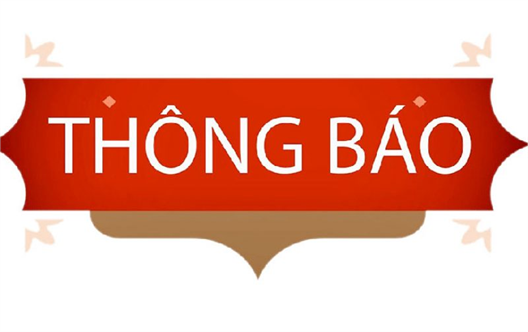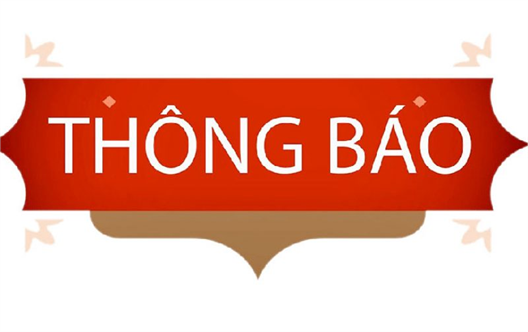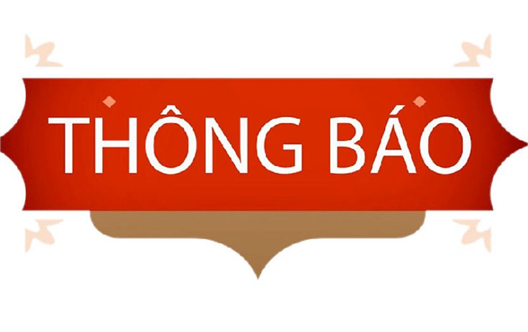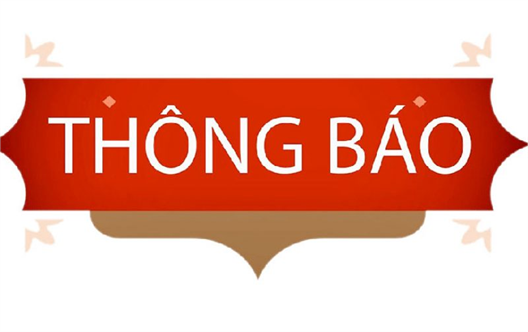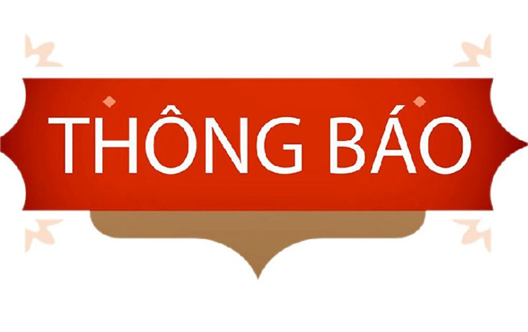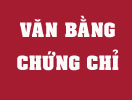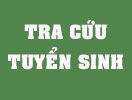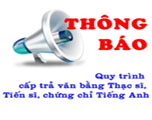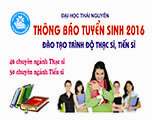Thông tin luận án
Ngày 11-03-2016
Thông tin luận án của NCS. Lê Văn Phúc
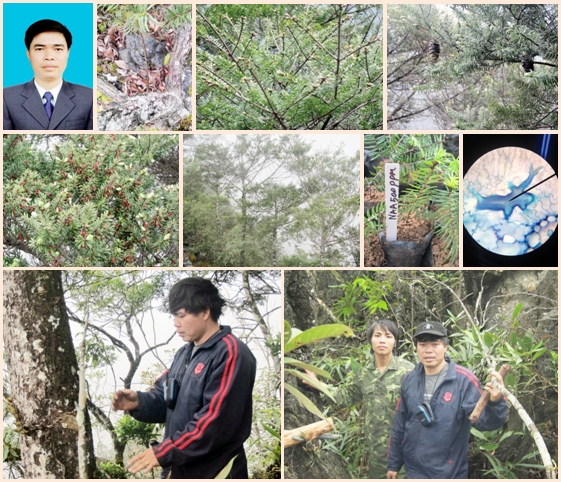
Tên đề tài luận án: “Nghiên cứu cơ sở khoa học và đề xuất các giải pháp bảo tồn Thiết sam giả lá ngắn (Pseudotsuga brevifolia W.C Cheng & L.K.Fu, 1975) tại tỉnh Hà Giang”.
Chuyên ngành: Lâm sinh
Mã số: 62 62 02 05
Họ và tên nghiên cứu sinh: Lê Văn Phúc
Khóa đào tạo: 2013 – 2016
Cán bộ hướng dẫn khoa học:
1. TS. Lê Đồng Tấn: Trung tâm Phát triển Công nghệ cao - Viện Hàn Lâm Khoa học và Công nghệ Việt Nam.
2. GS.TS. Đặng Kim Vui: Đại học Thái Nguyên.
Đơn vị đào tạo: Trường Đại học Nông lâm.
Cơ sở đào tạo: Đại học Thái Nguyên.
NHỮNG KẾT LUẬN MỚI CỦA LUẬN ÁN
1. Đặc điểm sinh học của loài Thiết sam giả lá ngắn: là loài cây gỗ nhỡ, mọc đứng, thân thẳng, vỏ có vết nứt dọc sâu dạng vảy. Lá đơn, mọc cách, cuống lá vặn, xếp sang 2 bên. Nón đơn tính cùng gốc, hạt hình trứng ba cạnh. Bộ rễ của loài phát triển rất mạnh, loài có tính chu kỳ sai nón, khả năng ra nón không đều giữa các năm.
2. Đặc điểm sinh thái của loài Thiết sam giả lá ngắn: Thiết sam giả lá ngắn quan hệ ngẫu nhiên với 9 loài: Bách xanh, Kim giao, Thông tre lá ngắn, Trai lý, Mun sừng, Thông đỏ bắc, Nghiến, Nhội, Sồi đá; quan hệ hỗ trợ với 2 loài: Dẻ gai và Tông dù. Thường mọc rải rác trên các sườn và đỉnh núi đá, ở độ cao từ 1100m trở lên. Đất Feralit mùn trên núi, độ pH trung tính, lượng mùn cao, đất xốp, hàm lượng đạm, lân, kali ở mức trung bình. Là loài chiếm ưu thế và ở tầng tán chính của rừng, rừng thường có 1-2 tầng cây gỗ, độ tàn che của rừng đạt từ 0,5-0,6; độ che phủ từ 30 - 40%. Mật độ của loài Thiết sam giả lá ngắn từ 150-270 cây/ha. Số loài cây gỗ tham gia vào công thức tổ thành rừng có từ 2-7 loài. Dạng phương trình mũ phù hợp nhất để nghiên cứu quy luật tương quan giữa Hvn/D1.3 và phương trình đường thẳng phù hợp nhất để nghiên cứu quy luật tương quan giữa Dt/D1.3 cho loài Thiết sam giả lá ngắn.
3. Đặc điểm tái sinh của loài Thiết sam giả lá ngắn: Có khả năng tái sinh bằng hạt, mật độ tái sinh của loài Thiết sam giả lá ngắn từ 270 - 380 cây/ha; tỷ lệ cây tái sinh triển vọng đạt từ 59,26 - 63,16%; tỷ lệ cây tái sinh từ hạt chiếm từ 92,89 - 93,7%. Cây tái sinh chủ yếu tập trung ở cấp chiều cao >1m, phân bố ngẫu nhiên trên bề mặt đất rừng, chủ yếu ở ngoài tán cây mẹ. Cây con tái sinh chịu ảnh hưởng của nhiều yếu tố như: cây bụi, thảm tươi, địa hình và những tác động của con người.
4. Khả năng nhân giống của loài Thiết sam giả lá ngắn thấy rằng, loài này có khả năng nhân giống bằng hom, thí nghiệm về nhân giống bằng hom được thực hiện 3 lần: Kết quả lần 1 sau 90 ngày thì toàn bộ hom bị chết. Kết quả giâm hom lần 2 tại Trường Đại học Nông Lâm Thái Nguyên tỷ lệ hom ra rễ rất thấp chỉ chiếm 3,8% ở IAA 500ppm. Kết quả giâm hom lần 3 tại Trung tâm bảo tồn Thông, xã Cán Tỷ, huyện Quản Bạ, tỉnh Hà Giang. Chất kích thích ra rễ NAA 500ppm có tỷ lệ sống cao nhất (53,33%) và có số hom ra rễ nhiều nhất (23,33%).
5. Các yếu tố ảnh hưởng đến sự tồn tại, sinh trưởng, phát triển của loài Thiết sam giả lá ngắn: Các nguyên nhân có ảnh hưởng đến loài gồm: khai thác gỗ, củi, cháy rừng, mở rộng diện tích canh tác nương rẫy làm chia cắt quần thể, nhận thức về loài còn hạn chế, tỷ lệ nghèo đói cao, công tác quản lý chưa hiệu quả và chu kỳ ra hoa kết nón cách năm, khả năng tái sinh ngoài tự nhiên kém.
6. Đề xuất một số giải pháp bảo tồn và phát triển loài Thiết sam giả lá ngắn: Bảo tồn nội vi, bảo tồn ngoại vi và giải pháp về kinh tế xã hội nhằm hạn chế sự tác động tiêu cực đến loài Thiết sam giả lá ngắn và môi trường sống của loài.
KHẢ NĂNG ỨNG DỤNG TRONG THỰC TIỄN VÀ VẤN ĐỀ CẦN TIẾP TỤC NGHIÊN CỨU
* Khả năng ứng dụng trong thực tiễn:
- Kết quả luận án là tài liệu tham khảo cho đào tạo và nghiên cứu khoa học cho ngành Lâm sinh các trường đại học, cao đẳng và viện nghiên cứu lâm nghiệp.
- Áp dụng kết quả của luận án để tạo giống cây con cây Thiết sam giả lá ngắn từ giâm hom cành.
* Những vấn đề còn bỏ ngỏ cần tiếp tục nghiên cứu:
- Nghiên cứu chu kỳ ra nón và tạo nón của loài Thiết sam giả lá ngắn để bố trí thời gian thu hái hạt giống.
- Nghiên cứu gieo ươm bằng hạt và xây dựng mô hình trồng cho loài Thiết sam giả lá ngắn để tạo nguồn giống cho công tác bảo tồn Ex-situ.
INFORMATION OF DOCTORAL DISSERTATION
The dissertation title: "Research on scientific bases and propose some conservation measures Pseudotsuga brevifolia Cheng & LK Fu W. C , 1975 in Ha Giang province"
Speciality: Silviculture
Code: 62 62 02 05
PhD. Candidate: Le Van Phuc
Training course: 2013 – 2016
Scientific Supervisors:
1. Le Dong Tan, PhD. - Center for high technology development, Vietnam Academy of Science and Technology.
2. Prof. Dang Kim Vui, PhD. - Thai Nguyen University.
Training institution: College of Agriculture and Forestry, Thai Nguyen University
THE NEW SCIENTIFIC FINDINGS
1. Description of biological characteristics: Pseudotsuga brevifolia is medium size, standing tree and straight height. The bark presents longitudinal fissures and covered in scales. The leaves are arranged in simple leaf, sole (leaves alternate direction), whorled petiole, and divided into paired at each node. The cone is monoecious, each seed resembles anegg shape with triangle. The root system grows very quickly. This species has seed year cycle, the ability for flower and fruit is inhomogeneity in years.
2. Description of ecological characteristics: Pseudotsuga brevifolia has a random relationship with 9 species: Calocedrus macrolepis, Podocarpus fleuryi, Podocarpus pilgeri, Garcinia fagracoides, Diospyros mun, Taxus chinensis, Bischofia javanica, Toona sinensis; Pseudotsuga brevifolia has symbiosis relationship with species such as Toona sinensis and Castanopsis chinensis. Appearance of this species is scattered on the flank and ridgesof lime Stone Mountain. This species occurs above 1100 m, Feralit soils with neutral pH and humus, fine-textured, amount of nitrogen phosphorus and potassium being medium. This species is dominant species and occupies the main forest canopy. Forests which contain this species have 1 or 2 layer of woody species. Vegetation cover ranges from 0.5 to 0.6, forest cover ranges from 30% to 40%. Stand density of this species ranges 150 stems to 270 stems per hectare. The number of woody species appears in silvicultural tree composition formula obtains from 2 to 7 species. Exponential function was appropriate to show a correlation between Hvn and D1.3 while the linear suitably performed correlation between crown diameter (Dt) and diameter at breastheight (D1.3).
3. Description of ecological characteristics of regenerated seedling: Pseudotsuga brevifolia regeneration by seed, stand density of regenerated seedling of Pseudotsuga brevifolia ranges from 270 stems to 380 seedlings per hectare; The rate of regeneration prospects accounted for 59.26 – 63.16%of seedlings. Most regenerated seedlings derived from seeds of 92.89 – 93.7%. There is a large number of regenerated seedlings with height being above 1 m and seedling distributed in randomly outside crown of parent trees. The process of regenerated seedling has been affected by many factors such as shrub, ground cover vegetation, topographic factor and human.
4. Propagation of Pseudotsuga brevifolia experiments of cutting stem propagation were carried out 3 times. All cuttings were died in the first experiment after 90 days, followed by 3.8 % in the ratio of rooting formation with IAA 500ppmin the second experience conducted in Thai Nguyen University of Agriculture and Forestry. Moreover, the third one conducted in Center preservation of Pine species, Can Ty Commune, Quan Ba District, Ha Giang Province indicated that the highest germination percentage values acquired with NAA 500ppm application accounted for 53.33% and 23.33% for the rooting cuttings and living, respectively.
5. Factors impacted existence, growth and development of Pseudotsuga brevifolia: Wood exploitation, wood fuel, forest fire, extension of slash and burn separated the population, limitedknowledge of this species, high rate of poverty, inefficient management of forest, seed year cycle and insufficient regenerated seedling outside natural condition are main factors affected existence, growth and development of this species.
6. Propose some solutions to preserve and develop this species: In-situ and Ex-situ Conservation and Socio- economic solutions are efficient to cut down adverse impacts on this species and living condition.
PRACTICAL APPLICABILITY AND THE NEEDS FOR FURTHER STUDIES
* Practical applicability:
- The results of dissertation will be used full reference document for training and researching in universities, colleges, institutes of forestry and Silviculture.
- Application methods to propagate the Pseudotsuga brevifolia seedlings with branch cuttings.
* The needs for further studies:
- Seed year cycle need to be conducted in ongoing researches to identify time needed for harvesting seeds.
- Seed propagation method need to be done and afforestation of this species need to be modelled, which provides breeds for ex-situ conservation.
